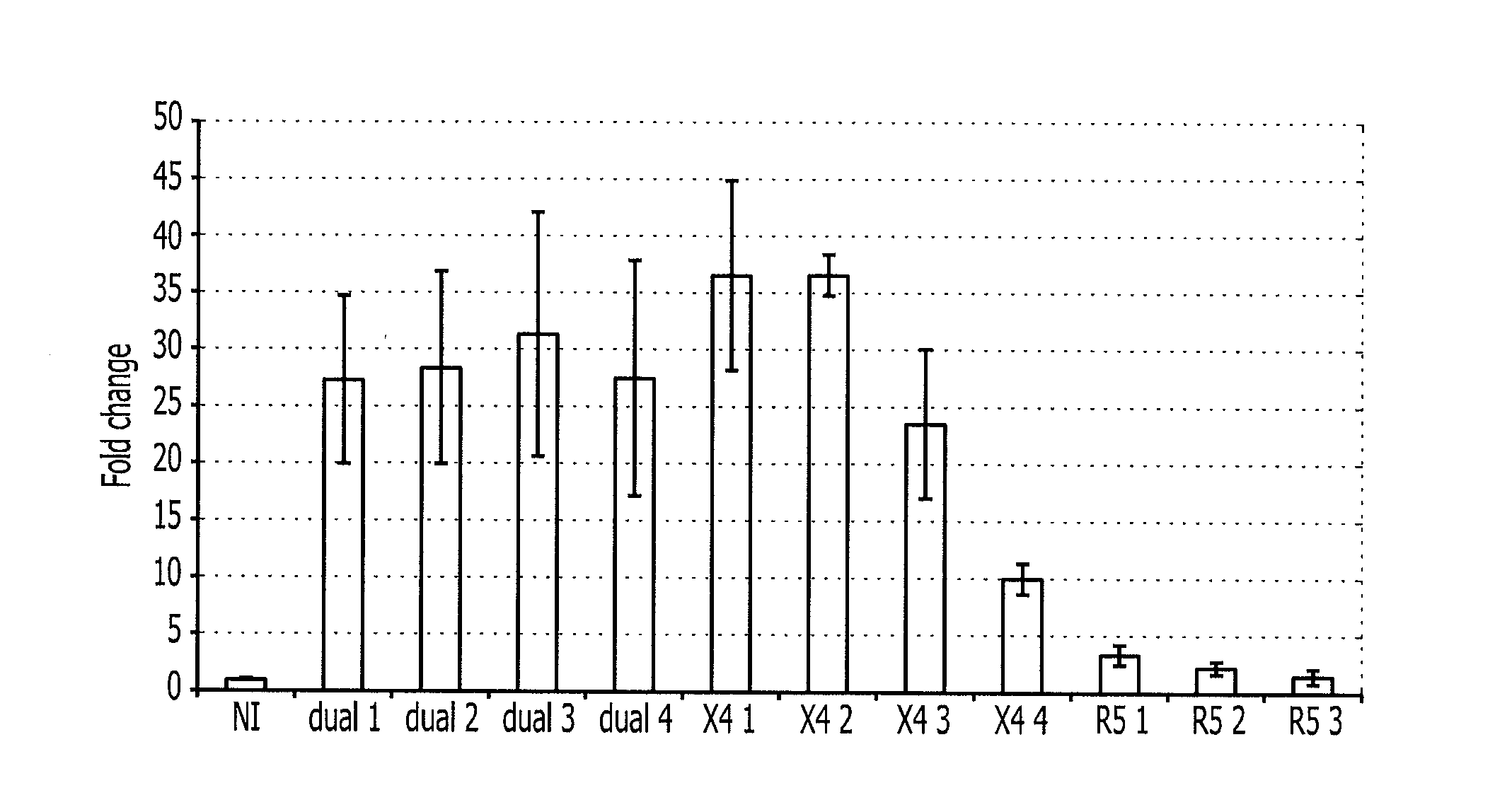Identifying viral cell tropism
a cell tropism and virus technology, applied in combinational chemistry, biochemistry apparatus and processes, library screening, etc., can solve the problems of high cost, incompatibility with fast decision-making, and no profile test for viruses of hiv-2 types
- Summary
- Abstract
- Description
- Claims
- Application Information
AI Technical Summary
Benefits of technology
Problems solved by technology
Method used
Image
Examples
example 1
Identification of the microRNAs
[0081]Modulations of the expression of the microRNAs induced by the prototype viruses HIV-1 NL4.3 and HIV-2 ROD, both using the co-receptor CXCR4, were studied. In order to limit the inter-individual variations and to operate with an identical genetic background (and therefore a comparable list of microRNAs) these modulations are studied both during the infection of the Jurkat cell line and of the Jurkat line expressing CCR5. Three days after the infection, the RNAs of the Jurkat cells are extracted and subject to analysis with microRNA chips. Table 1 shows a sub-population of microRNAs both modulated by HIV-1 NL4.3 and HIV-2 ROD.
TABLE 1Significant (p during infection with HIV-1 NL4.3 and HIV-2 ROD of Jurkat cells andJurkat-CCR5 cells at 1 and 100 TCID50.microRNAs, the expression of which is increasedduring infection with NL4.3 and RODhsa-miR-574-5phsa-miR-575hsa-miR-663hsa-miR-638hsa-miR-149*microRNAs, the expression of which is decreasedduring infect...
example 2
[0086]In order to validate the thereby obtained results, Jurkat-CCR5 cells (expressing both the receptor CXCR4 and the receptor CCR5) are infected with viruses stemming from primary isolates using the co-receptor CXCR4 (X4 1, X4 2, X4 3 and X4 4), using the co-receptors CCR5 (R5 1, R5 2 and R5 3) or which may use both co-receptors CXCR4 and CCR5 (dual 1, dual 2, dual 3 and dual 4).
[0087]The expression of hsa-miR-638 in infected or uninfected (NI, control) cells is measured after 3 days. As expected and as indicated in FIG. 1, the expression of hsa-miR-638 is not modified in the uninfected cells. This expression is not statistically modified any more in cells infected with viruses only using CCR5 as a co-receptor for entering the cells (R5 1, R5 2 and R5 3) (FIG. 1). On the other hand, this expression is significantly increased in cells having been infected with a virus capable of using the CXCR4 co-receptor for entering the cells (X4 1, X4 2, X4 3, X4 4, dual 1, dual 2, dual 3 and d...
PUM
| Property | Measurement | Unit |
|---|---|---|
| time | aaaaa | aaaaa |
| temperature | aaaaa | aaaaa |
| temperature | aaaaa | aaaaa |
Abstract
Description
Claims
Application Information
 Login to View More
Login to View More - R&D
- Intellectual Property
- Life Sciences
- Materials
- Tech Scout
- Unparalleled Data Quality
- Higher Quality Content
- 60% Fewer Hallucinations
Browse by: Latest US Patents, China's latest patents, Technical Efficacy Thesaurus, Application Domain, Technology Topic, Popular Technical Reports.
© 2025 PatSnap. All rights reserved.Legal|Privacy policy|Modern Slavery Act Transparency Statement|Sitemap|About US| Contact US: help@patsnap.com

